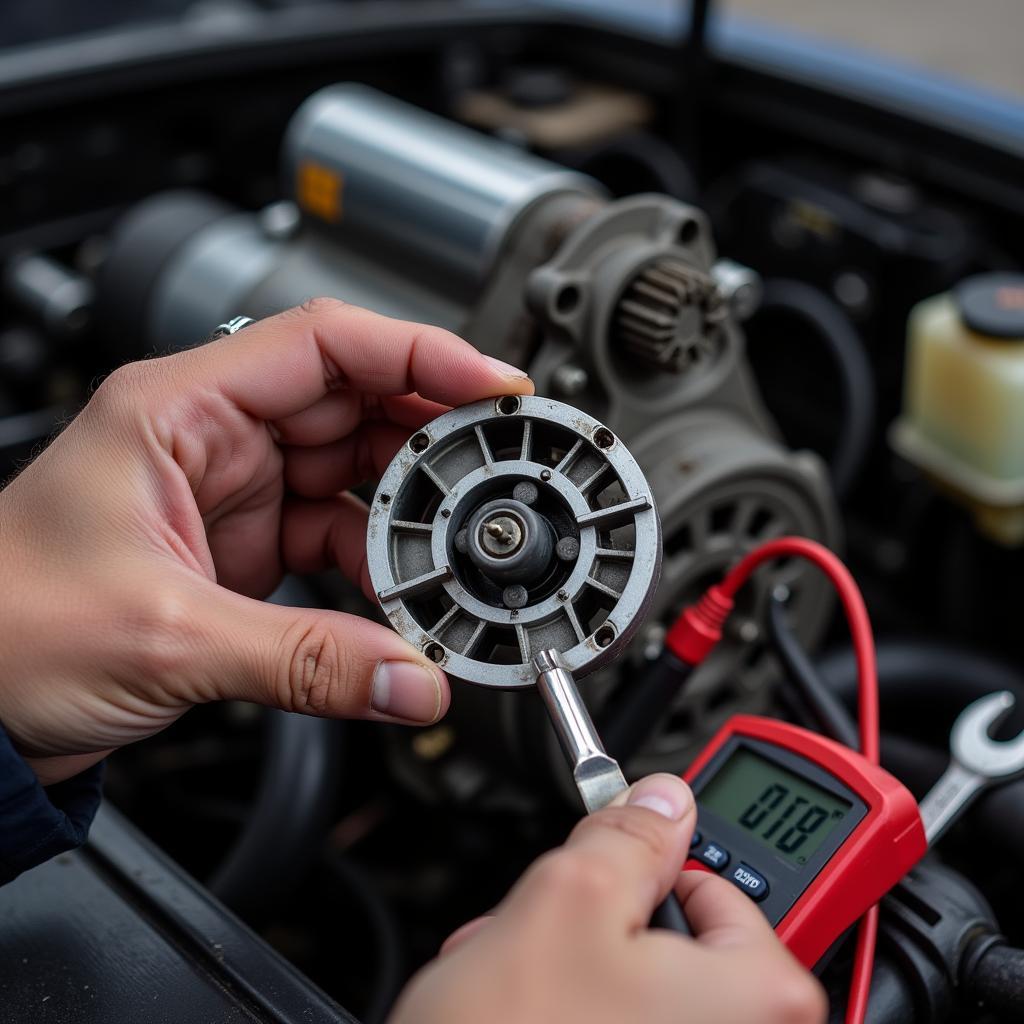The AdBlue system is a vital part of your Peugeot 208, ensuring the vehicle meets emissions regulations. However, sometimes you might encounter issues that require a reset, such as a warning message on your dashboard or a malfunctioning AdBlue sensor. This guide will walk you through the process of resetting the AdBlue system in your Peugeot 208, providing valuable information for DIY enthusiasts and those seeking professional assistance.
Understanding the Peugeot 208 AdBlue System
The AdBlue system in your Peugeot 208 utilizes a urea solution to reduce harmful nitrogen oxide emissions from the diesel engine. This system relies on precise measurements and a well-maintained tank to function correctly.
What Causes AdBlue System Issues?
- Low AdBlue fluid level: The AdBlue tank can empty over time, leading to a warning message on the dashboard.
- AdBlue sensor malfunction: The sensor that monitors AdBlue fluid levels may become faulty, triggering inaccurate readings and system issues.
- AdBlue system malfunction: The AdBlue system itself might experience problems due to faulty components, clogging, or other issues.
How to Reset the Peugeot 208 AdBlue System
Before attempting any AdBlue reset, it’s crucial to understand the potential risks and ensure you possess the necessary knowledge and tools. Consulting your car’s owner’s manual or seeking professional assistance from a qualified mechanic is always recommended.
Common Methods for AdBlue Reset:
- Topping up AdBlue fluid: If the warning message is due to a low AdBlue level, simply topping up the tank with high-quality AdBlue solution should resolve the issue.
- Using a diagnostic tool: Specialized diagnostic tools can be used to access the vehicle’s computer system and reset the AdBlue system. This method requires technical expertise and specialized equipment.
- Manually resetting the system: In some cases, you might be able to reset the AdBlue system manually through the vehicle’s menu system.
Troubleshooting and Potential Solutions
Here’s a step-by-step guide to troubleshooting common AdBlue system problems:
- Check the AdBlue fluid level: Ensure the AdBlue tank is filled to the recommended level. Consult your car’s manual for proper filling procedures.
- Inspect the AdBlue sensor: If the AdBlue sensor appears damaged or dirty, cleaning or replacement might be necessary.
- Check for leaks: Examine the AdBlue tank and its associated hoses for any signs of leaks.
- Use a diagnostic tool: A specialized diagnostic tool can provide valuable insights into the AdBlue system’s status, identifying potential errors or malfunctions.
- Consult a mechanic: If the problem persists, it’s advisable to seek professional assistance from a qualified mechanic.
Expert Tip: “Always use genuine AdBlue fluid from reputable suppliers to ensure optimal performance and avoid potential damage to your vehicle’s AdBlue system,” advises John Smith, a seasoned automotive technician.
FAQ: AdBlue Reset in Peugeot 208
Q: How often should I refill my AdBlue tank?
A: The AdBlue refill frequency depends on your driving habits and the size of your tank. Consult your car’s manual or the warning message on the dashboard for guidance.
Q: What happens if I ignore the AdBlue warning message?
A: Ignoring the AdBlue warning message can lead to engine performance issues and potentially damage the AdBlue system. It’s essential to address the warning promptly.
Q: Can I use regular water or other fluids instead of AdBlue?
A: Absolutely not! Using anything other than genuine AdBlue fluid will damage your vehicle’s AdBlue system and potentially void your warranty.
Q: Is it safe to reset the AdBlue system myself?
A: While some simple resets might be safe, others require technical expertise and specialized tools. It’s recommended to consult your owner’s manual or a mechanic if you’re unsure.
Q: Where can I find AdBlue fluid?
A: AdBlue fluid is widely available at most car dealerships, auto parts stores, and gas stations.
Q: How do I know if my AdBlue sensor is malfunctioning?
A: An AdBlue sensor malfunction often results in inaccurate readings, leading to false warning messages or problems with the AdBlue system. A diagnostic tool can help determine if the sensor is faulty.
Conclusion
Resetting your Peugeot 208 AdBlue system might seem intimidating, but understanding the process and utilizing the right tools can make the task manageable. Remember to prioritize safety and consult professional help when needed. Regular maintenance and prompt attention to warning messages will help keep your AdBlue system functioning optimally, ensuring your vehicle meets emissions standards and continues to perform flawlessly.


